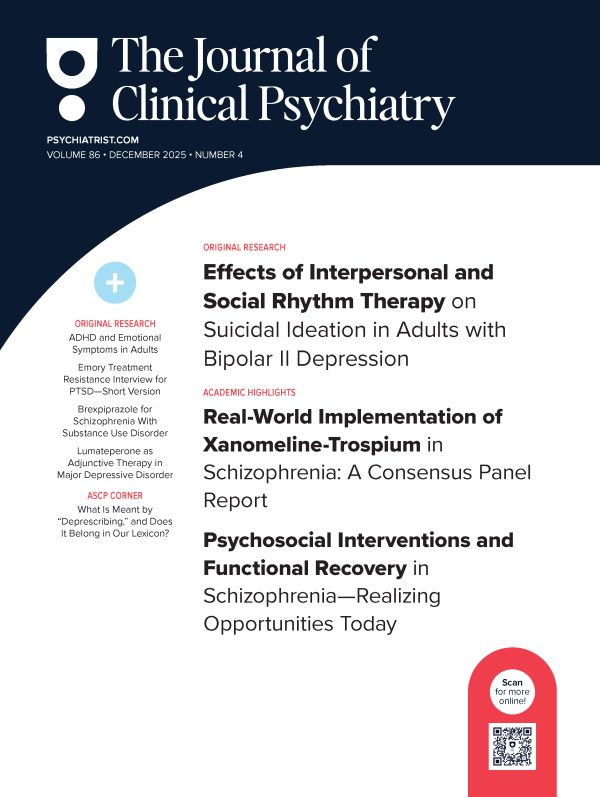Abstract
Objective: Niacin-induced skin flushing response (NSFR) attenuation is a well documented biomarker for psychosis and has also been used in studies of bipolar affective disorder. It appears not only in later stages but also in first episodes and in clinical high-risk (CHR) stages.
Methods: NSFR tests were conducted on healthy controls (HC), CHR individuals, and first-episode psychosis (FEP) patients from January 2019 to March 2024. The tests involved applying niacin patches at different concentrations and recording skin responses at multiple time points. A newly introduced slope variable was used to evaluate response efficiency. CHR participants were followed for 3 years to assess the predictive value of NSFR efficiency and attenuation degree for psychosis onset.
Results: This study included 98 CHR individuals (mean age: 18.4 years, 42.9% male), 54 FEP patients (24.7 years, 50% male), and 61 HC (25.8 years, 54.1% male). Over the 3-year follow-up, 23 (23.5%) CHR individuals converted to psychosis. CHR individuals showed NSFR attenuation levels between those of FEP patients and HC. Lower response efficiency was associated with a higher risk of developing psychosis, specifically at 10−4 M and 10−2 M concentrations (P = .001 and P = .039, respectively). The area under the curve for predicting psychosis onset using slope values at 10−2 M was 0.645 (P = .034). For discriminating CHR from HC, significant factors included slope at 10−3 M concentration (P = .006), total scores at 5 minutes (P = .001) and 15 minutes (P = .005), and total scores at 10−3 M (P = .002) and 10−2 M (P = .001). For discriminating FEP from HC, significant factors were the slope at 10−4 M concentration (P = .023), total score at 5 minutes (P = .003), and total score at 10−3 M concentration (P = .040).
Conclusions: NSFR efficiency is a sensitive marker for early psychosis risk, highlighting the need for precise and comprehensive detection methods.
J Clin Psychiatry 2025;86(3):24m15559
Author affiliations are listed at the end of this article.
Members Only Content
This full article is available exclusively to Professional tier members. Subscribe now to unlock the HTML version and gain unlimited access to our entire library plus all PDFs. If you’re already a subscriber, please log in below to continue reading.
References (36)

- Liu CM, Chang SS, Liao SC, et al. Absent response to niacin skin patch is specific to schizophrenia and independent of smoking. Psychiatry Res. 2007;152(2–3):181–187. PubMed CrossRef
- Messamore E. Niacin subsensitivity is associated with functional impairment in schizophrenia. Schizophr Res. 2012;137(1–3):180–184. PubMed CrossRef
- Lin SH, Liu CM, Chang SS, et al. Familial aggregation in skin flush response to niacin patch among schizophrenic patients and their nonpsychotic relatives. Schizophr Bull. 2007;33(1):174–182. PubMed CrossRef
- Hu Y, Xu L, Gan R, et al. A potential objective marker in first-episode schizophrenia based on abnormal niacin response. Schizophr Res. 2022;243:405–412. PubMed CrossRef
- Nadalin S, Giacometti J, Jonovska S, et al. The impact of PLA2G4A and PTGS2 gene polymorphisms, and red blood cell PUFAs deficit on niacin skin flush response in schizophrenia patients. Prostaglandins Leukot Essent Fatty Acids. 2013;88(2):185–190. PubMed CrossRef
- Xu C, Yang X, Sun L, et al. An investigation of calcium-independent phospholipase A2 (iPLA2) and cytosolic phospholipase A2 (cPLA2) in schizophrenia. Psychiatry Res. 2019;273:782–787. PubMed CrossRef
- Yao JK, Dougherty GG Jr., Gautier CH, et al. Prevalence and specificity of the abnormal niacin response: a potential endophenotype marker in schizophrenia. Schizophr Bull. 2016;42(2):369–376. PubMed CrossRef
- Sun L, Yang X, Jiang J, et al. Identification of the niacin-blunted subgroup of schizophrenia patients from mood disorders and healthy individuals in Chinese population. Schizophr Bull. 2018;44(4):896–907. PubMed CrossRef
- Ward PE, Sutherland J, Glen EM, et al. Niacin skin flush in schizophrenia: a preliminary report. Schizophr Res. 1998;29(3):269–274. PubMed CrossRef
- Zhang T, Xu L, Wei Y, et al. Advancements and future directions in prevention based on evaluation for individuals with clinical high risk of psychosis: insights from the SHARP study. Schizophr Bull. 2025;51(2):343–351. PubMed CrossRef
- Zhang T, Xu L, Tang X, et al. Comprehensive review of multidimensional biomarkers in the ShangHai At Risk for Psychosis (SHARP) program for early psychosis identification. PCN Rep. 2023;2(4):e152. PubMed CrossRef
- Miller TJ, McGlashan TH, Rosen JL, et al. Prodromal assessment with the Structured Interview for Prodromal Syndromes and the Scale of Prodromal Symptoms: predictive validity, interrater reliability, and training to reliability. Schizophr Bull. 2003;29(4):703–715. PubMed CrossRef
- Miller TJ, McGlashan TH, Rosen JL, et al. Prospective diagnosis of the initial prodrome for schizophrenia based on the Structured Interview for Prodromal Syndromes: preliminary evidence of interrater reliability and predictive validity. Am J Psychiatry. 2002;159(5):863–865. PubMed CrossRef
- Zhang T, Tang X, Li H, et al. Clinical subtypes that predict conversion to psychosis: a canonical correlation analysis study from the ShangHai At Risk for Psychosis program. Aust N Z J Psychiatry. 2020;54(5):482–495. PubMed CrossRef
- Zhang T, Tang X, Zhang Y, et al. Multivariate joint models for the dynamic prediction of psychosis in individuals with clinical high risk. Asian J Psychiatr. 2023;81:103468. PubMed CrossRef
- Zhang T, Xu L, Tang Y, et al. Prediction of psychosis in prodrome: development and validation of a simple, personalized risk calculator. Psychol Med. 2019;49(12):1990–1998. PubMed CrossRef
- Miller TJ, Cicchetti D, Markovich PJ, et al. The SIPS screen: a brief self-report screen to detect the schizophrenia prodrome. Schizophr Res. 2004;70(suppl1):78.
- Kay SR, Fiszbein A, Opler LA. The Positive and Negative Syndrome Scale (PANSS) for schizophrenia. Schizophr Bull. 1987;13(2):261–276. PubMed CrossRef
- Zhang T, Li H, Woodberry KA, et al. Prodromal psychosis detection in a counseling center population in China: an epidemiological and clinical study. Schizophr Res. 2014;152(2–3):391–399. PubMed CrossRef
- Zhang TH, Li HJ, Woodberry KA, et al. Two-year follow-up of a Chinese sample at clinical high risk for psychosis: timeline of symptoms, help-seeking and conversion. Epidemiol Psychiatr Sci. 2017;26(3):287–298. PubMed CrossRef
- Zheng L, Wang J, Zhang T, et al. The Chinese version of the SIPS/SOPS: a pilot study of reliability and validity. Chin Ment Health J. 2012;26(8):571–576.
- Berger GE, Smesny S, Schäfer MR, et al. Niacin skin sensitivity is increased in adolescents at ultra-high risk for psychosis. PLoS One. 2016;11(2):e0148429. PubMed CrossRef
- Gan R, Wei Y, Wu G, et al. Attenuated niacin-induced skin flush response in individuals with clinical high risk for psychosis. Gen Psychiatr. 2022;35(2):e100748. PubMed CrossRef
- Wang DD, Hu XW, Jiang J, et al. Attenuated and delayed niacin skin flushing in schizophrenia and affective disorders: a potential clinical auxiliary diagnostic marker. Schizophr Res. 2021;230:53–60. PubMed CrossRef
- Zhang T, Xiao X, Wu H, et al. Association of attenuated niacin response with inflammatory imbalance and prediction of conversion to psychosis from clinical high-risk stage. J Clin Psychiatry. 2023;84(5):22m14731. PubMed CrossRef
- Langbein K, Schmidt U, Schack S, et al. State marker properties of niacin skin sensitivity in ultra-high risk groups for psychosis - an optical reflection spectroscopy study. Schizophr Res. 2018;192:377–384. PubMed CrossRef
- Messamore E. Relationship between the niacin skin flush response and essential fatty acids in schizophrenia. Prostaglandins Leukot Essent Fatty Acids. 2003;69(6):413–419. PubMed CrossRef
- Buretić-Tomljanović A, Giacometti J, Nadalin S, et al. Phospholipid membrane abnormalities and reduced niacin skin flush response in schizophrenia. Psychiatr Danub. 2008;20(3):372–383. PubMed
- Messamore E, Hoffman WF, Yao JK. Niacin sensitivity and the arachidonic acid pathway in schizophrenia. Schizophr Res. 2010;122(1– 3):248–256. PubMed CrossRef
- Lien YJ, Huang SS, Liu CM, et al. A genome-wide quantitative linkage scan of niacin skin flush response in families with schizophrenia. Schizophr Bull. 2013;39(1):68–76. PubMed CrossRef
- Yang X, Li M, Jiang J, et al. Dysregulation of phospholipase and cyclooxygenase expression is involved in Schizophrenia. EBioMedicine. 2021;64:103239. PubMed CrossRef
- Zhang T, Wei Y, Cui H, et al. Associations between age and neurocognition in individuals at clinical high risk and first-episode psychosis. Psychiatry Res. 2023;327:115385. PubMed CrossRef
- Sitarz R, Juchnowicz D, Karakuła K, et al. Niacin skin flush backs-from the roots of the test to nowadays hope. J Clin Med. 2023;12(5):1879. PubMed CrossRef
- Zhang T, Xu L, Li H, et al. Individualized risk components guiding antipsychotic delivery in patients with a clinical high risk of psychosis: application of a risk calculator. Psychol Med. 2021;17:1–10. PubMed CrossRef
- Zhang T, Xu L, Tang X, et al. Real-world effectiveness of antipsychotic treatment in psychosis prevention in a 3-year cohort of 517 individuals at clinical high risk from the SHARP (ShangHai at Risk for Psychosis). Aust N Z J Psychiatry. 2020;54(7):696–706. PubMed CrossRef
- Chen T, Liu H, Tian R, et al. Artificial intelligence-assisted niacin skin flush screening in early psychosis identification and prediction. Gen Psychiatr. 2022;35(2):e100753. PubMed CrossRef






